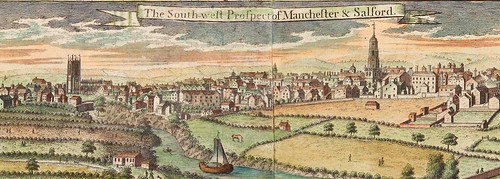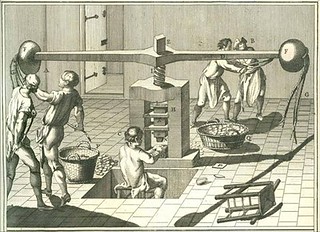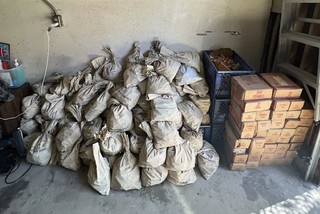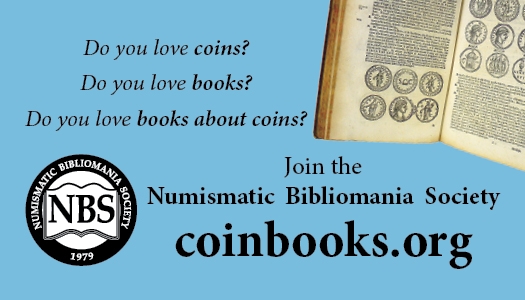
PREV ARTICLE
NEXT ARTICLE
FULL ISSUE
PREV FULL ISSUE
1793 MANCHESTER PROMISSORY HALFPENNY, PART TWODenis Richard of Canada's Coin Photography Studio publishes a blog with some nicely researched (and illustrated!) articles on various numismatic topics. With permission, we're republishing one here. Thank you! Here's the second of two parts of an article on the 1793 Manchester Promissory Halfpenny token. -Editor Manufacturers like William Lutwyche played a pivotal role in the evolution of token production, broadening its driving forces to 'supply' and 'demand.' This transformation turned tokens into a marketed commodity instead of merely a commissioned item. Lutwyche aimed at the rural market segment, close to the sources of raw materials or waterpower, concentrating his sales efforts on tradesmen and shopkeepers in provincial areas like Manchester. Perhaps a savvy merchant, John Fielding, might have sought out tokens to boost his business visibility or a travelling salesman from Lutwyche's visited his shop. Birmingham's toy manufacturers, even leading medallion creators such as Matthew Boulton, had long employed travelling salesmen to promote their business, and Lutwyche probably followed a comparable strategy, if more modestly. According to historical records, this halfpenny token was produced in enormous quantities for its time and place, with a total issuance valued at £2,300. To comprehend the volume of coins this represents, consider that with two halfpence per pence, 12 pence per shilling, and 20 shillings per pound, £2,300 could purchase more than 1.1 million halfpenny tokens. Manchester was home to just 18,560 families, and at a time when people earned only a few shillings per week, this was quite a fortune.
In Ontario Canada, John Reyes and his wife stumbled upon 1 million copper pennies while cleaning out her father's 1900s-era home.
It remains a mystery why Fielding ordered such a large quantity of tokens. The £2,300 cost would be too great for a single shopkeeper. This fact led David W. Dykes, in his book "Coinage and Currency of the Eighteenth-Century – The Provincial Coinage," to propose that Fielding spearheaded a consortium of trade members. This group absorbed the costs, making it more economical to provide tokens for their collective use than it would have been individually. We may assume Fielding's plan to hand out promissory tokens that could only be used at his store was intended to build customer loyalty and motivate people to come back and buy more. However, the notion of 'promissory' was interpreted quite broadly by numerous issuers, and many viewed issuing tokens mainly as opportunities for speculative gain, content with the idea that once their halfpennies were distributed among the public, they would never have to redeem them. This strategy remains effective today, with up to 10% of gift cards going unredeemed, translating into a profitable revenue stream for businesses. Today, after 221 years, of the over one million tokens minted, how many remain is anyone's guess. Some undoubtedly lie buried in old gardens and building sites, while others may still be hidden away in collections or treasured by descendants of those who originally received them. Most are likely melted. But many of those that survive in collectors' hands, like the coin pictured here, are well worn, evidence of the extensive circulation they received. The last interesting feature of this token is it has a die clip or a defective planchet, as seen in the images below. This little nick adds character to the coin, making it slightly less valuable to collectors. Ces't la vie. The contribution of grocers, often overlooked, played a crucial role in people's daily lives in 18th-century England. This grocer's token has survived over two centuries, outliving its initial use and being passed down through generations. Still, there remain many questions. Who was John Fielding? During his time, seven individuals with the same name were interred in the Manchester area, and it is unclear which one of them issued our token. What drove him to issue these tokens, and how successful was his plan? We'll likely never know the answers, but pondering and exploring the possibilities is fascinating. I've never enjoyed drinking tea, but I do enjoy having this tea merchant token in my collection.
Denis Richard My professional memberships and affiliations include the American Numismatic Association, the Canadian Numismatic Association, the Ontario Numismatic Association, and the Canadian Association of Photographic Arts.
For more information, see:
To read the complete article, see:
To read the earlier E-Sylum article, see:
Wayne Homren, Editor The Numismatic Bibliomania Society is a non-profit organization promoting numismatic literature. See our web site at coinbooks.org. To submit items for publication in The E-Sylum, write to the Editor at this address: whomren@gmail.com To subscribe go to: Subscribe All Rights Reserved. NBS Home Page Contact the NBS webmaster 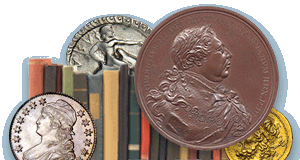
|
